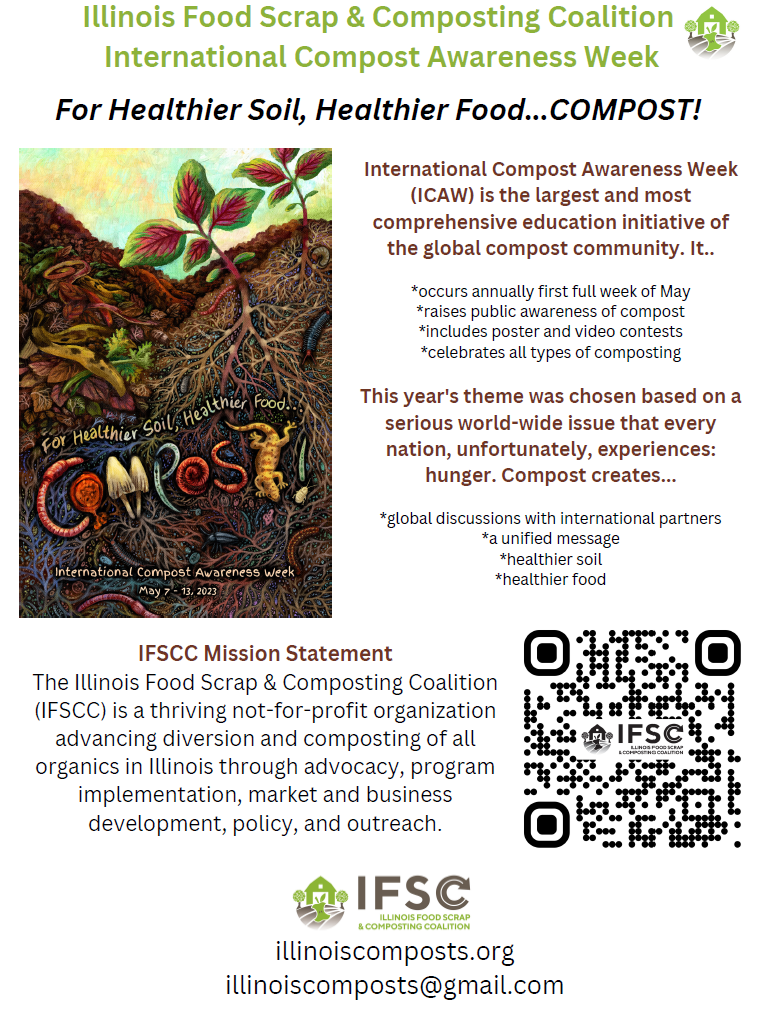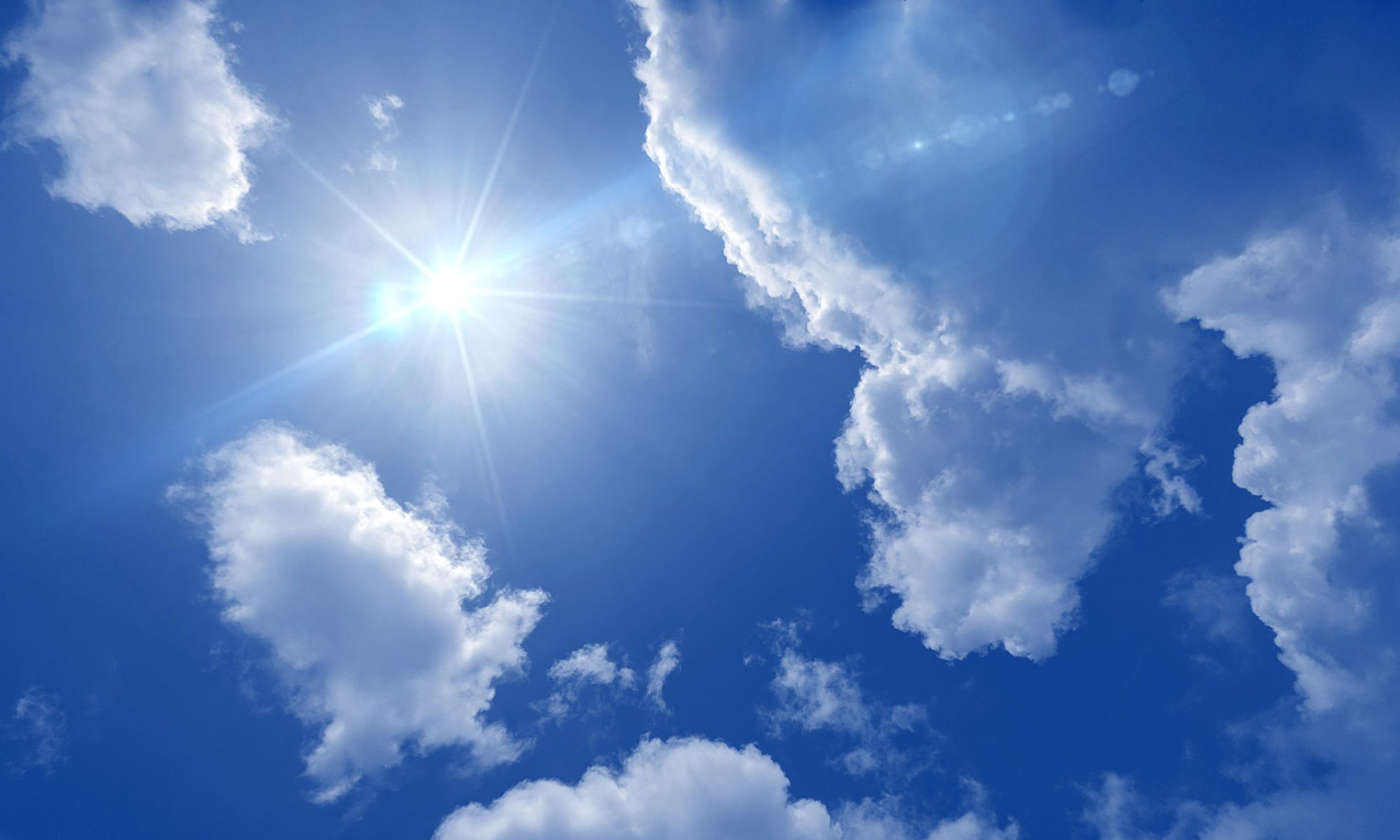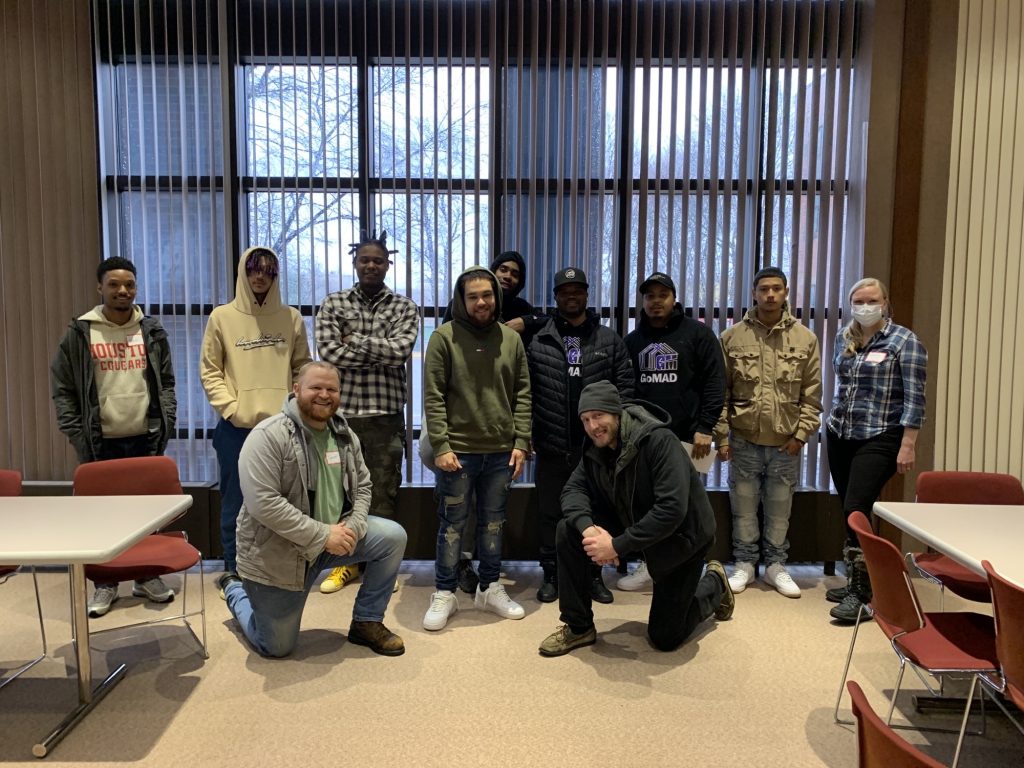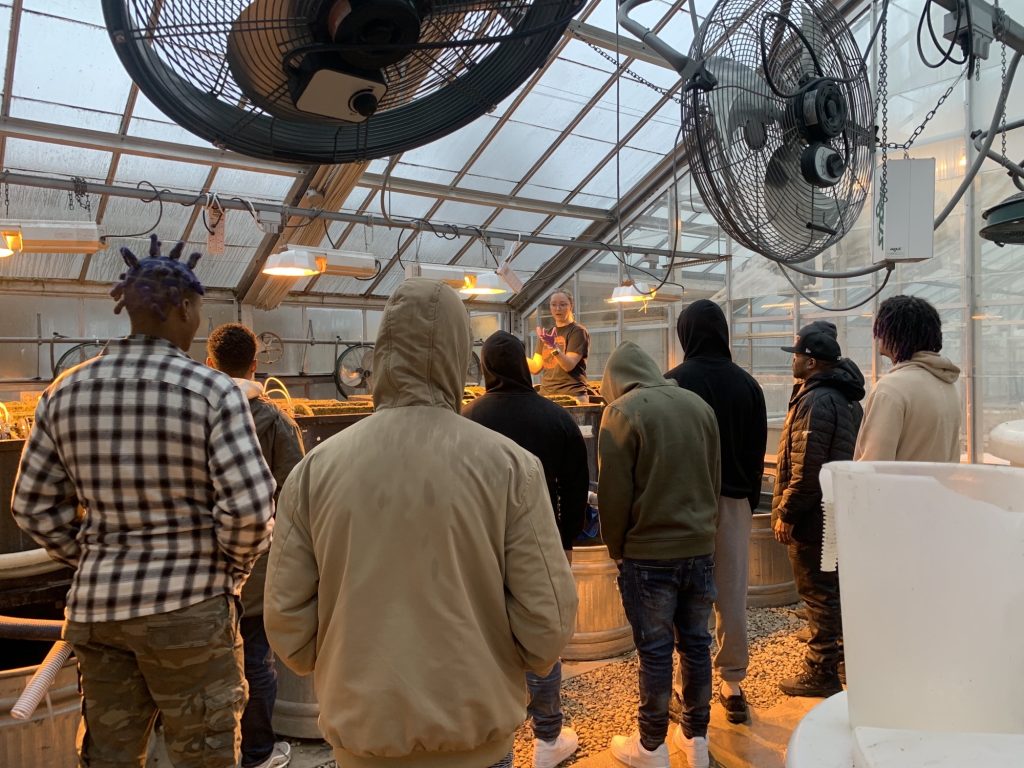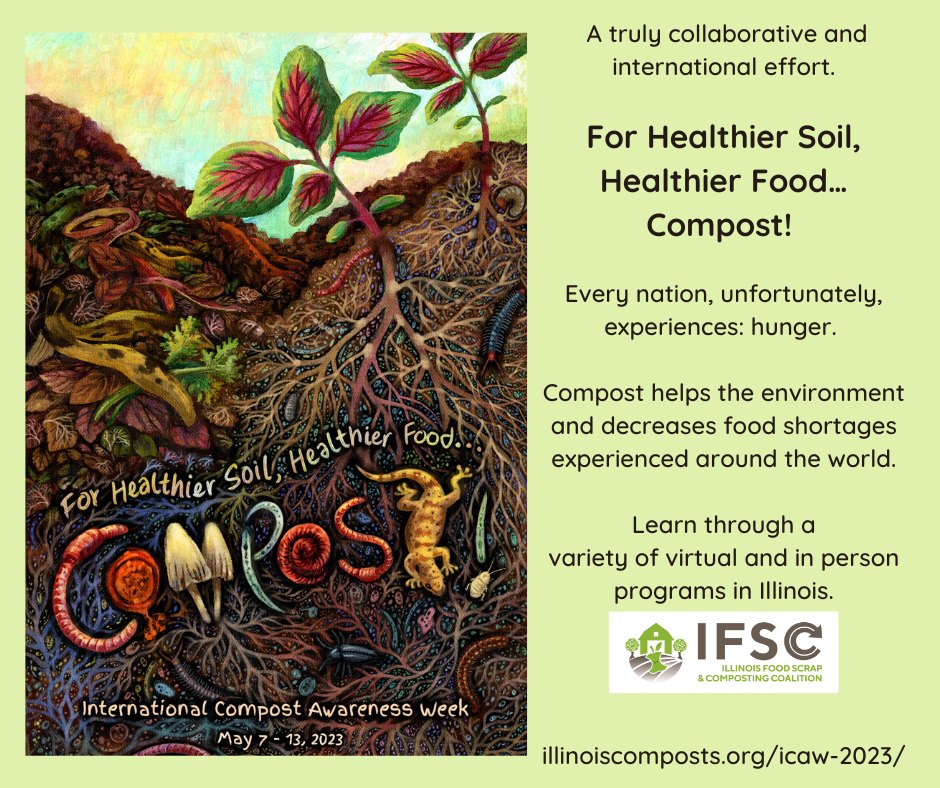
The Illinois Food Scrap & Composting Coalition (IFSCC), a non-profit organization that advances the diversion and composting of all organics in the state, has announced its International Compost Awareness Week (ICAW) 2023 programming. ISTC is an organizational member of IFSCC and the Technical Assistance Program’s zero waste team is actively involved in IFSCC and its committees.
ICAW is the largest and most comprehensive education initiative of the global compost community. The 2023 ICAW theme is “For Healthier Soil … Healthier Food, Compost!” and the 2023 dates are Sunday, May 7 – Saturday, May 13. Learn more about ICAW on the Compost Research and Education Foundation website.
Since 2021, the IFSCC has planned robust ICAW programming that combines in-person and hands-on experiences with virtual discussions and presentations to reach diverse and widespread audiences at all stages of life and composting experience. The 2023 line-up includes a day of “Adventures in Composting” with farmers, gardeners, and backyard composters around the state; a virtual International Cafe at which composting stories from around the world will be shared; a virtual Legislative Lunch & Learn; and multiple opportunities throughout the week to attend library programs and obtain finished compost.
Visit https://illinoiscomposts.org/icaw-2023/ to learn more. This page on the IFSCC website includes:
- An expandable schedule of events, event map, and registration links for virtual events;
- A toolkit for libraries throughout IL to use for relevant programming during ICAW;
- Links to further information on international ICAW activities;
- Links to connect with ICAW on social media;
- Highlights from last year’s programming, including recordings of virtual events; and
- Bios for the co-chairs of the IFSCC ICAW planning committee, Kate Caldwell and Merleanne Rampale.
Finally, if you’re new to composting, check out this recent blog post from TAP, which includes resources for a variety of home composting methods: https://green-lunchroom.istc.illinois.edu/2023/04/05/composting-at-home-videos-upcoming-webinars-other-resources-for-beginners/.
